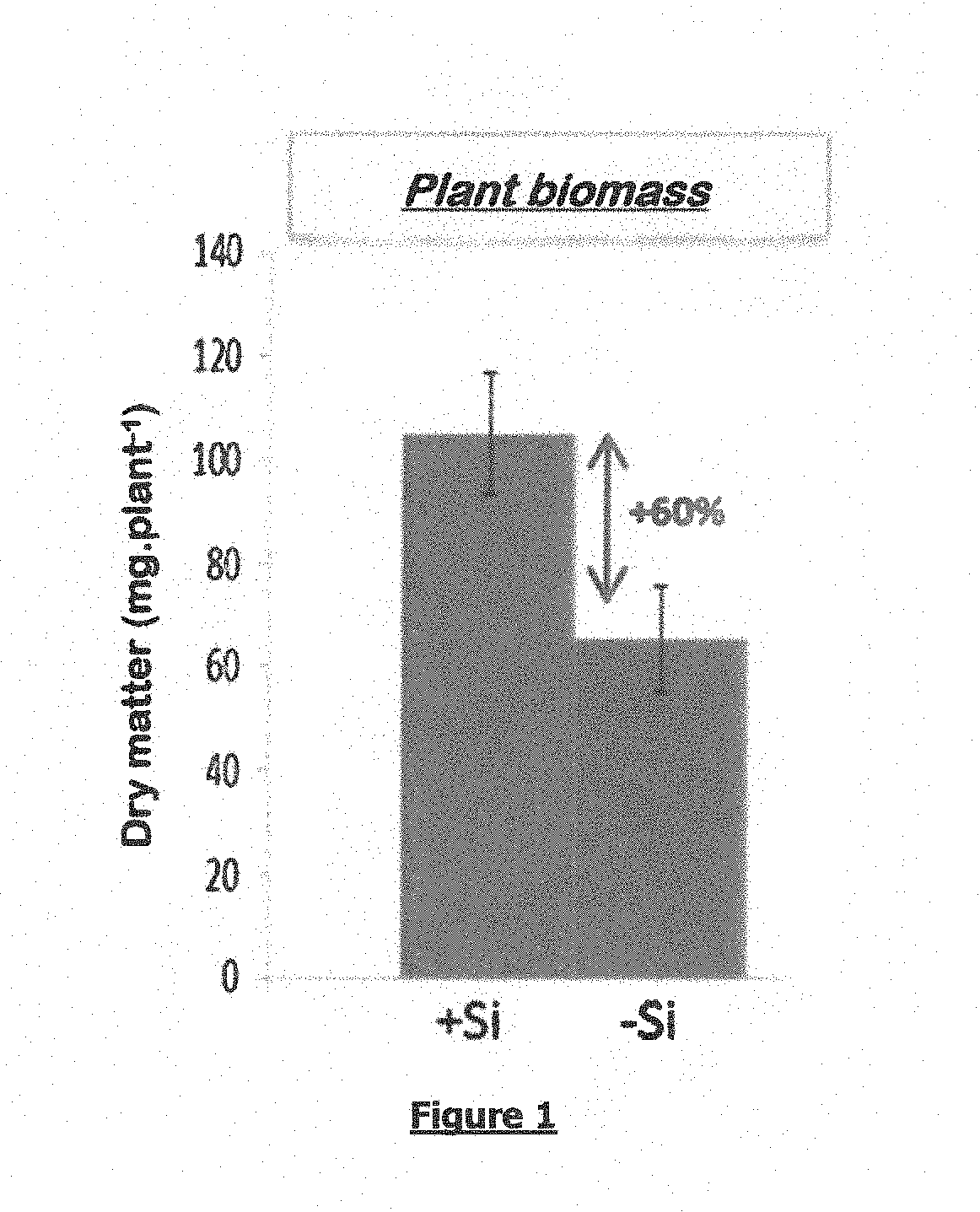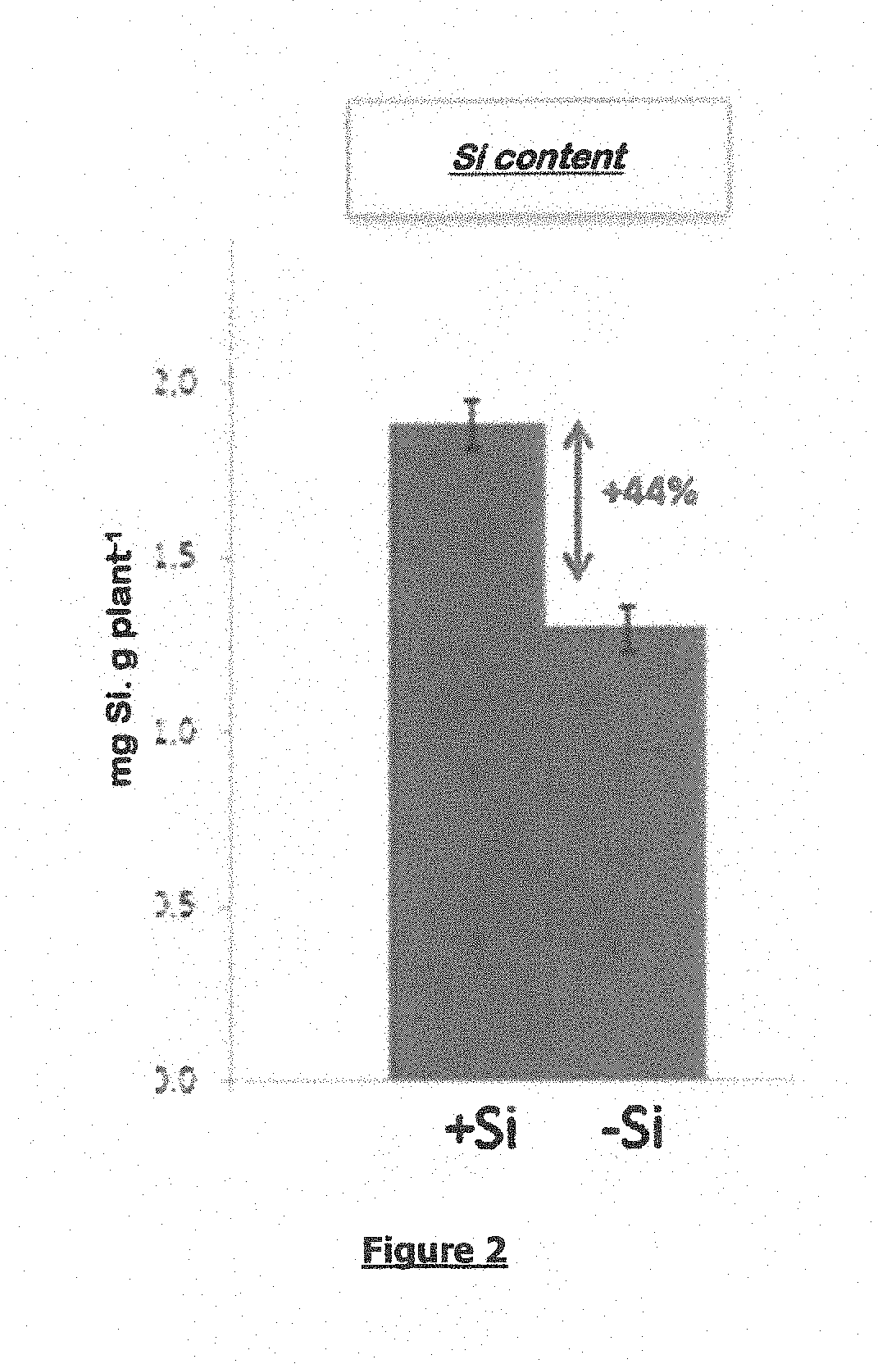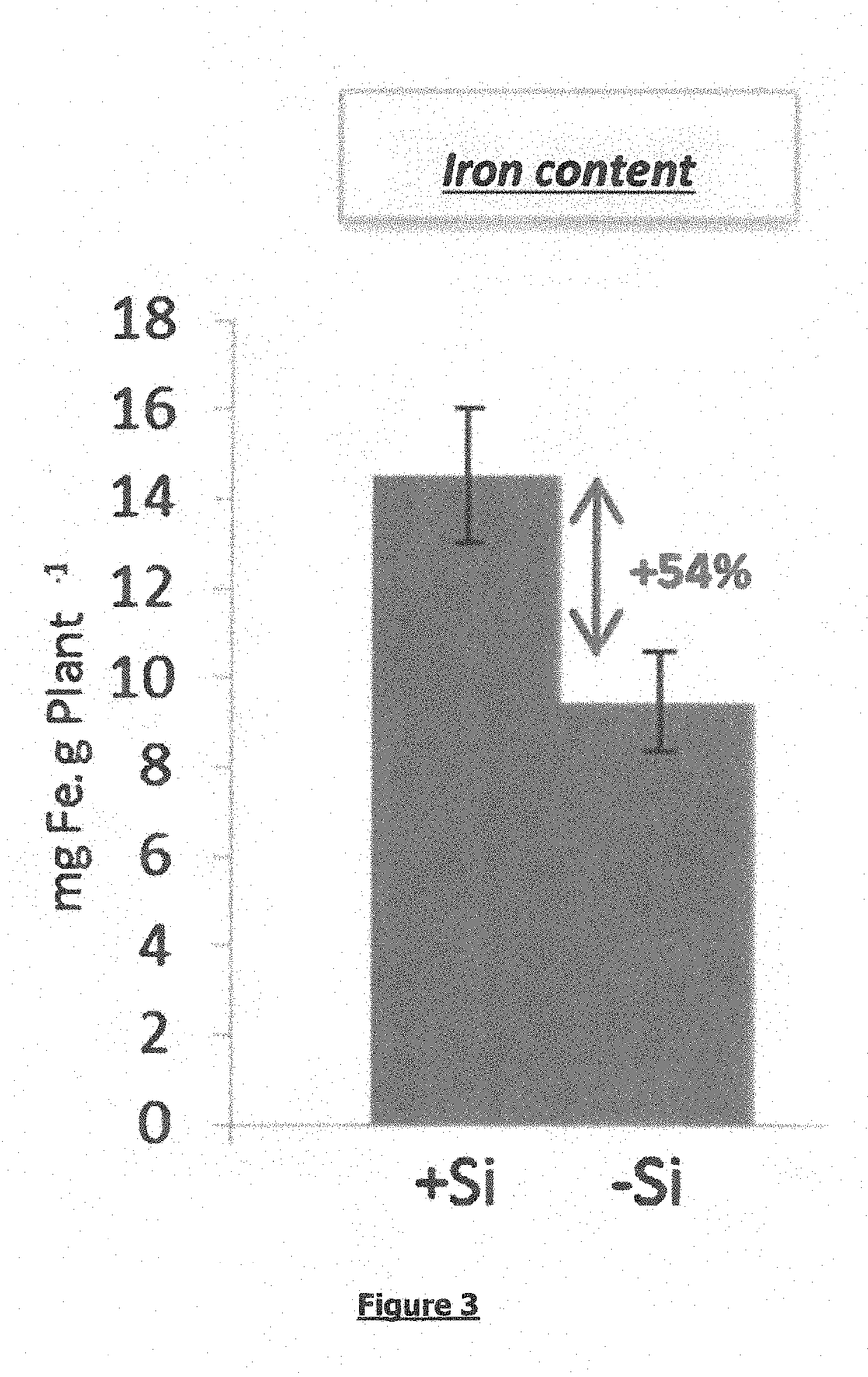Use of Silicon as a Stimulant for Iron Absorption in a Plant
- Summary
- Abstract
- Description
- Claims
- Application Information
AI Technical Summary
Benefits of technology
Problems solved by technology
Method used
Image
Examples
example 1
on of Plant Material
[0057]Grains of rice, Oryza sativa L. Var ADRET, were kept at +4° C. the day before germination was commenced in order to ensure homogeneous emergence. They were then sown onto a layer of perlite in tanks containing demineralized water and were left in darkness for 10 days before being brought into the light. After 7 days, the plantlets were pricked out into 8 L tanks containing a Hoagland solution (Table 1).
TABLE 1Composition of a Hoagland solution[Final conc] mMMacroelementsCO(NH2)21KCl0.1CaCl20.18KH2PO40.3MgSO4, 7H2O0.27EDTA, 2NaFe, H2O0.2MicroelementsH3BO39.4MnSO4, H2O6.7CuSO4, 5H2O0.16ZnSO4, 7H2O0.15(NH4)6Mo7O24, 4H2O0.015CoCl2, 6H2O0.1NiCl20.04
Feed Including Silicon (+Si)
[0058]1.5 millimoles (mM) silicon was supplied to the plantlets in the form of sodium silicate (Na2SiO3) which had been neutralized with HCl (1M, 30 milliliters (mL) for 8 liters (L) of nutrient solution), in order to encourage the formation of Si(OH)4, in accordance with the reaction schem...
example 2
nt of Physiological Parameters of the Plant
1. Determination of Foliage and Root Biomasses
[0063]Four batches of three plants harvested in Example 1 were made up for each of the cultivation conditions (+Si and −Si) (1 batch of 3 plants=1 biological repeat). The aerial parts (leaves and stems) and root parts of each plant were separated, weighed (fresh biomass) then finely ground in liquid nitrogen. The measurement of the biomass of a whole plant is shown in FIG. 1.
Conclusion: the plants treated with silicon exhibited a significant increase in their biomass (+60%), resulting in better growth of the rice plant.
2. Biochemical Analyses
[0064]Samples of fresh ground material (obtained as described in point 1) were freeze-dried for 48 h for each of the biological repeats. These samples were used to determine the dry matter and for the silicon (Si) and iron analysis using ICP-OES (Inductively Coupled Plasma-Optical Emission Spectroscopy).
[0065]The series of treatments was carried out systemat...
PUM
 Login to View More
Login to View More Abstract
Description
Claims
Application Information
 Login to View More
Login to View More - R&D
- Intellectual Property
- Life Sciences
- Materials
- Tech Scout
- Unparalleled Data Quality
- Higher Quality Content
- 60% Fewer Hallucinations
Browse by: Latest US Patents, China's latest patents, Technical Efficacy Thesaurus, Application Domain, Technology Topic, Popular Technical Reports.
© 2025 PatSnap. All rights reserved.Legal|Privacy policy|Modern Slavery Act Transparency Statement|Sitemap|About US| Contact US: help@patsnap.com



